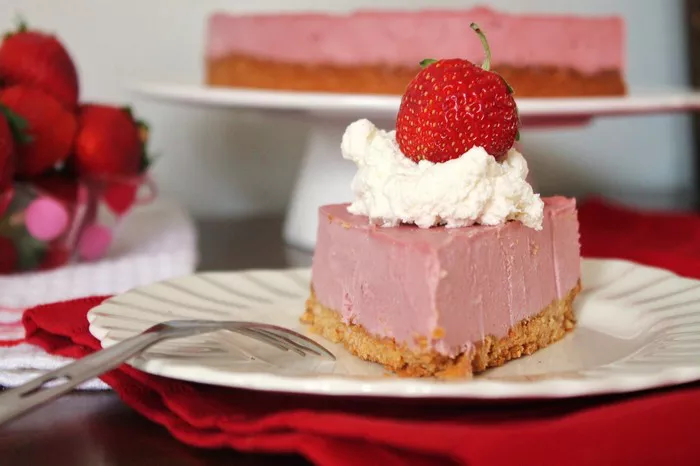When it comes to baking, ingredients play a pivotal role in determining the texture, flavor, and overall success of your creations. While butter has long been a staple in cake recipes, there’s a culinary trend that’s been making its way into kitchens worldwide—using olive oil as a substitute. The rich history and health benefits of olive oil, combined with its unique flavor profile, have sparked a curiosity about whether this Mediterranean marvel can truly shine in the world of cakes. In this article, we embark on a delicious journey to answer the question: Can I use olive oil in a cake?
Understanding the Role of Fat in Baking
Before delving into the realm of olive oil in cake baking, it’s essential to grasp the fundamental role of fat in baked goods. Fat is a key ingredient that contributes to the texture, moisture, and flavor of cakes. It helps create a tender crumb and adds richness to the final product. Traditionally, butter has been the fat of choice due to its creamy texture and distinctive taste.
The Olive Oil Advantage: Health and Flavor Unite
Olive oil, a cornerstone of Mediterranean cuisine, has gained widespread recognition for its health benefits and versatility. Rich in monounsaturated fats and antioxidants, olive oil is associated with heart health, anti-inflammatory properties, and even potential cancer-fighting effects. Its distinct flavor profile, ranging from delicate and fruity to robust and peppery, adds a layer of complexity to both savory and sweet dishes.
1. Selecting the Right Olive Oil
When considering using olive oil in a cake, it’s crucial to choose the right type of olive oil to achieve the desired flavor and outcome.
Extra Virgin Olive Oil: Extra virgin olive oil, derived from the first pressing of olives, boasts a vibrant flavor and distinct aroma. Its fruity and slightly peppery notes can infuse a cake with a delightful twist. This type of olive oil is best used in recipes where the flavor of the oil plays a prominent role.
Light or Mild Olive Oil: Light or mild olive oil has a milder taste and is suitable for recipes where you want the oil to remain in the background, allowing other flavors to shine. It’s an excellent choice if you’re concerned about the olive oil flavor overpowering the cake.
2. Substituting Olive Oil for Butter
Making the switch from butter to olive oil in cake recipes requires some adjustments to ensure the best possible outcome.
Amount Conversion: In general, you can use a 1:1 ratio when substituting olive oil for butter. For example, if a recipe calls for 1 cup of butter, you can replace it with 1 cup of olive oil.
Texture Considerations: Olive oil tends to create a moister texture in cakes compared to butter. This can lead to a denser and more tender crumb. To counteract this, you can reduce the amount of liquid (such as milk) in the recipe slightly.
Flavor Enhancement: The distinct flavor of olive oil can complement certain cake flavors, such as citrus, chocolate, and almond. Consider pairing olive oil with ingredients that harmonize with its taste profile.
3. Embracing the Mediterranean Flair
Baking with olive oil opens the door to a world of creative and flavorful possibilities. The unique characteristics of olive oil can add a Mediterranean flair to your cakes, elevating them from ordinary to extraordinary.
Citrus Olive Oil Cake: The bright and zesty notes of citrus fruits, such as lemons or oranges, pair beautifully with the fruity and slightly peppery flavor of extra virgin olive oil. A citrus olive oil cake can deliver a burst of sunshine with every bite.
Chocolate Olive Oil Cake: Olive oil’s complex flavor can enhance the depth of chocolate in a cake. The result is a luscious and decadent treat that balances the richness of chocolate with the subtleties of olive oil.
Almond and Olive Oil Cake: The nutty undertones of olive oil complement the delicate flavor of almonds. This combination creates an elegant and moist cake that’s perfect for special occasions.
4. Tips for Baking Success
While baking with olive oil can lead to delectable results, there are a few tips to keep in mind to ensure a successful outcome.
Use High-Quality Olive Oil: Opt for high-quality, reputable brands of olive oil. The flavor and quality of the oil will greatly influence the taste of your cake.
Whisk and Mix Thoroughly: When incorporating olive oil into the batter, ensure thorough mixing to evenly distribute the oil and prevent any unwanted oily pockets in the final product.
Experiment and Adjust: Baking is both an art and a science. Feel free to experiment with different types of olive oil and quantities to find the perfect balance of flavor and texture for your taste preferences.
Mind the Temperature: Olive oil tends to solidify in cooler temperatures. If your olive oil has solidified, gently warm it before incorporating it into the batter.
Store with Care: Cakes made with olive oil may have a slightly shorter shelf life than those made with butter. Store them in an airtight container in a cool, dry place to maintain their freshness.
Conclusion
Can you use olive oil in a cake? Absolutely! Baking with olive oil can open the door to a world of culinary creativity, allowing you to infuse your cakes with the rich flavors of the Mediterranean. Whether you’re aiming to embrace the health benefits of olive oil or explore new taste sensations, incorporating this liquid gold into your cake recipes can yield delightful and mouthwatering results.
As you embark on this flavorful journey, remember that baking is about more than just following a recipe—it’s about experimentation, passion, and the joy of creation. So, gather your high-quality olive oil, don your apron, and let your taste buds guide you as you explore the art of baking with a Mediterranean twist. Your cakes may never be the same again, and your culinary horizons will undoubtedly expand in the most delectable way imaginable.
























